phs midterm review
1/243
There's no tags or description
Looks like no tags are added yet.
Name | Mastery | Learn | Test | Matching | Spaced |
|---|
No study sessions yet.
244 Terms
body mechanics
specific positions for muscles and joints that help a person avoid injury during a physical task
informed consent
a patient’s choice to accept or reject a procedure after receiving information on available options and possible consequences
malpractice
term for actions that violate a professional’s scope of practice or standard of care and result in injury to a patient that could reasonably have been expected
mandatory reporting
the legal requirement for certain health issues to be reported to authorities
medical errors
preventable mistakes that can occur at any point in the healthcare process and may potentially cause harm to the patient
organizational chart
a diagram that shows how departments in an organization are related to one another
safety check
the process of looking for an removing potential hazards that could cause injury or harm
safety precautions
information about the safe operation of a piece of equipment, which is usually found on the instruction manual or on equipment labels
scope of practice
tasks that an employee is legally allowed to perform based on his or her training and certification
standard of care
the level of service that a healthcare professional is expected to provide to a patient based on that professional’s position and the patient’s condition
workplace violence
acts of verbal abuse, threats, physical assault, or homicide that occur at work
trachea
1
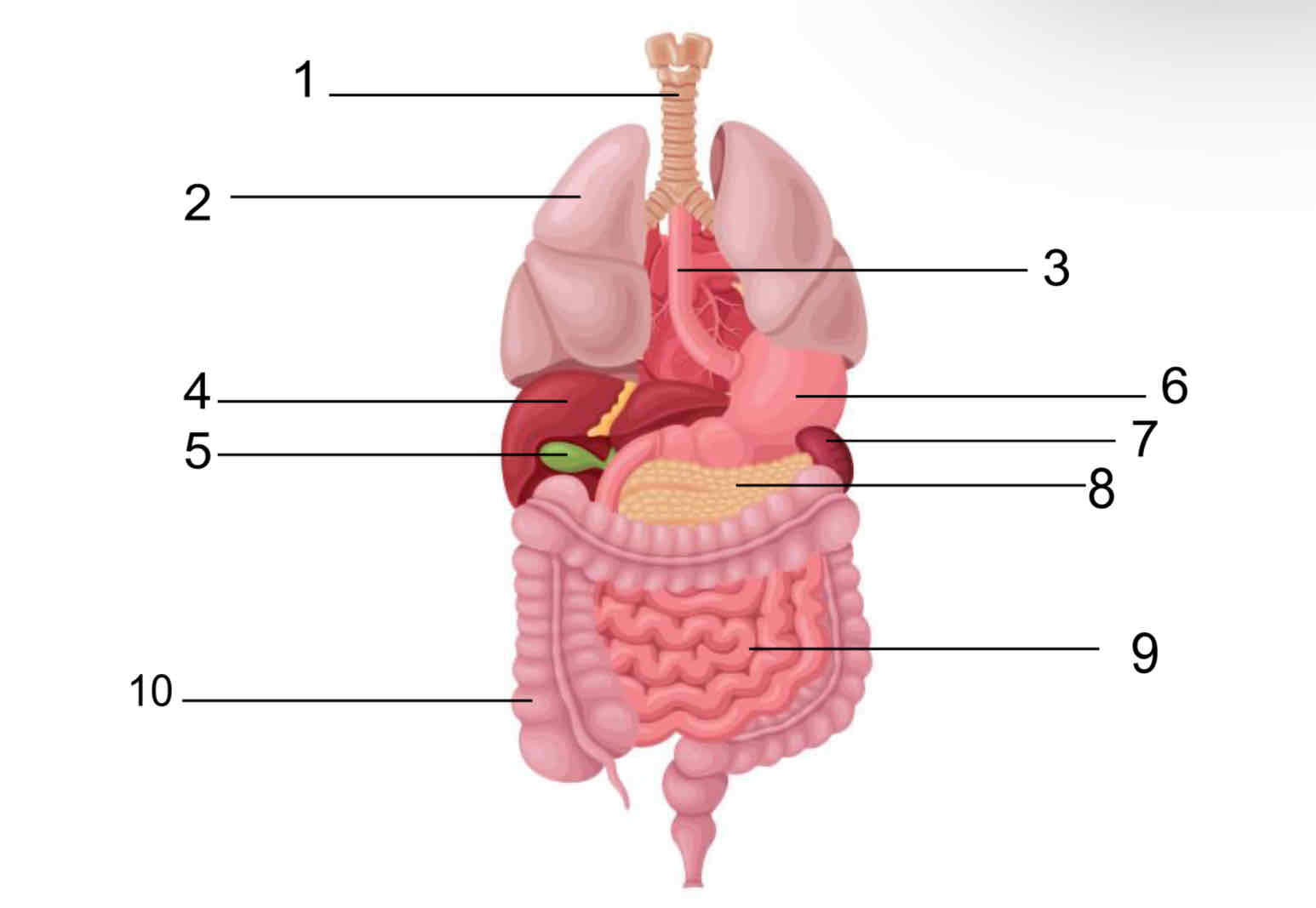
lungs
2
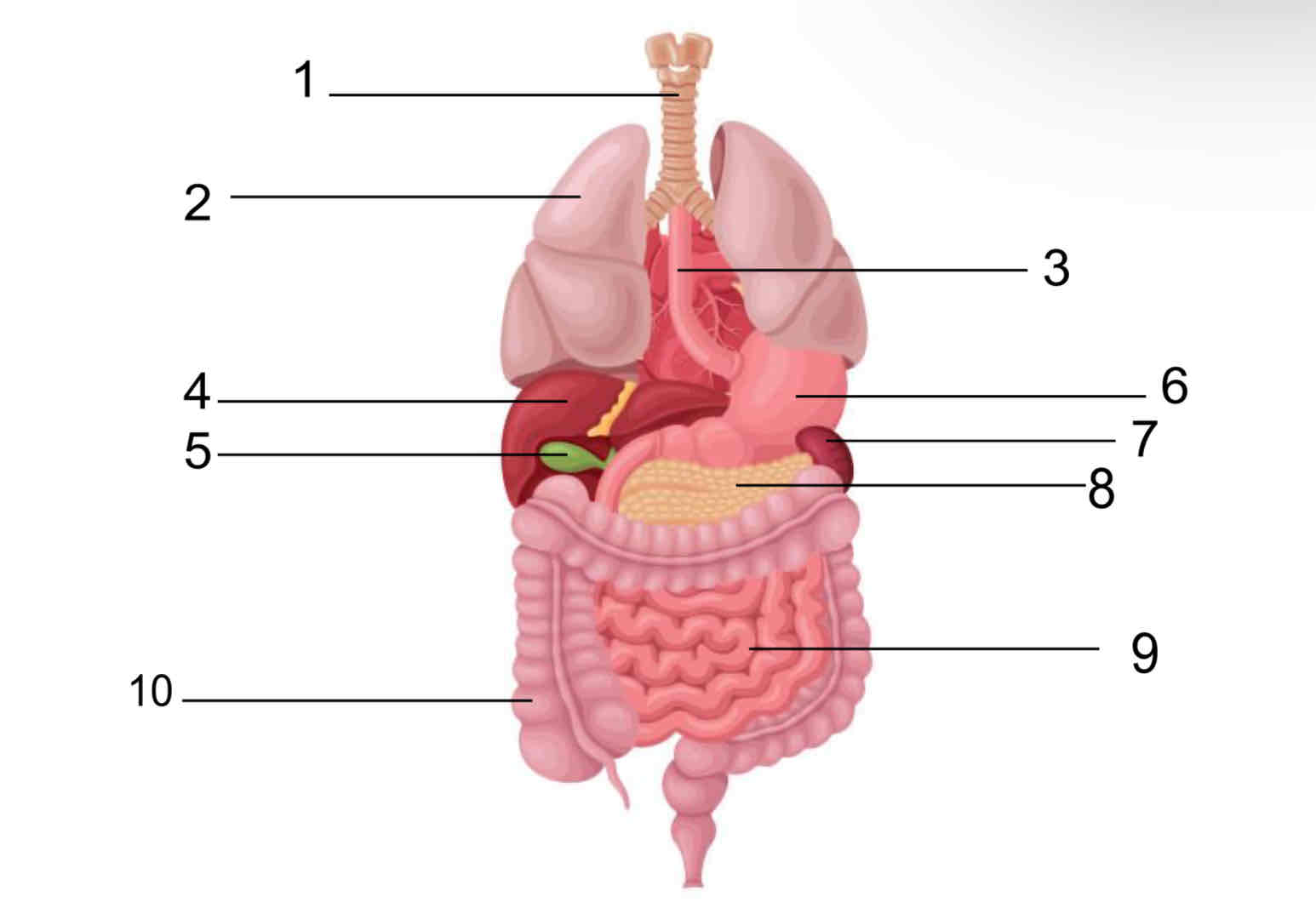
liver
4
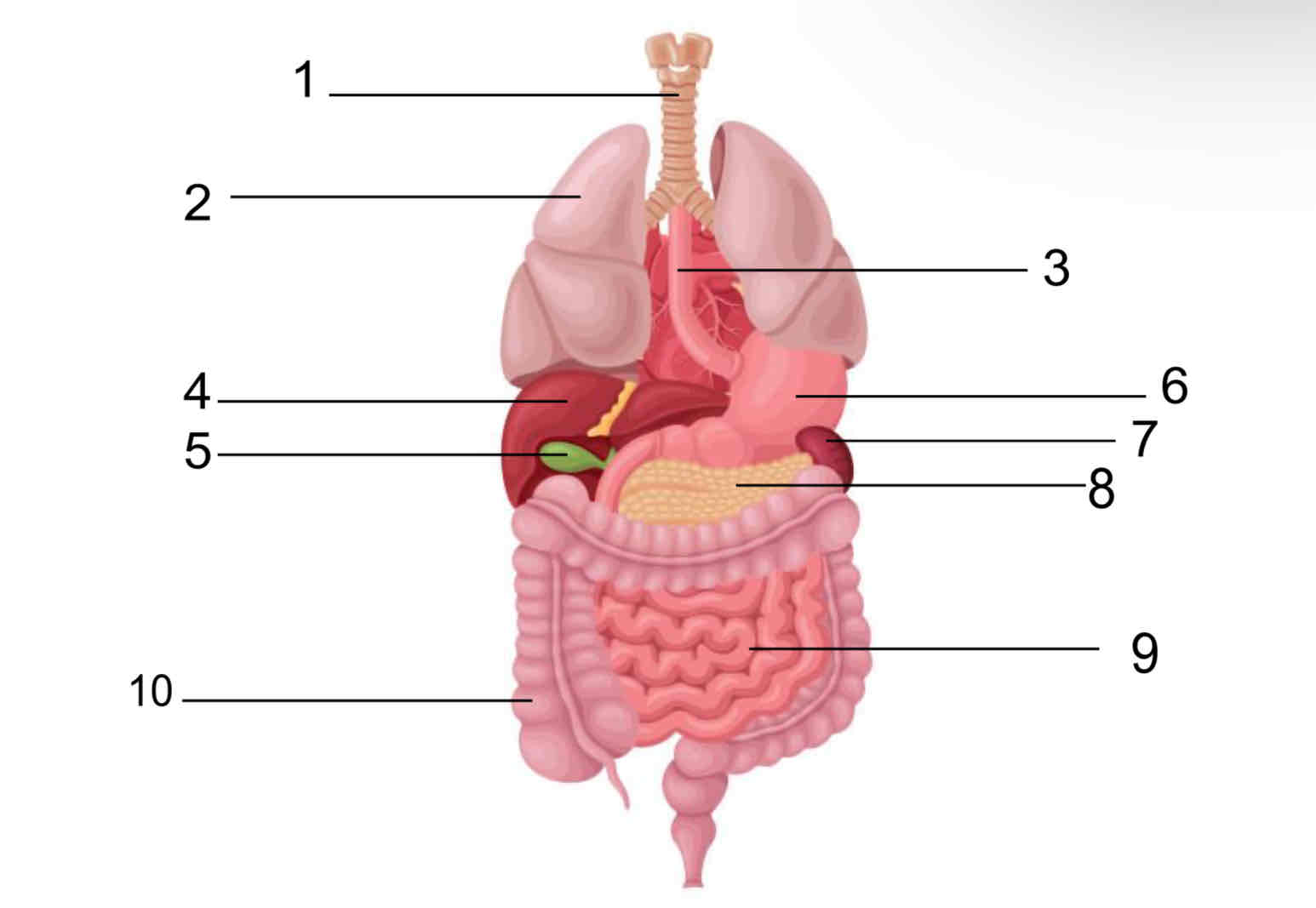
gallbladder
5
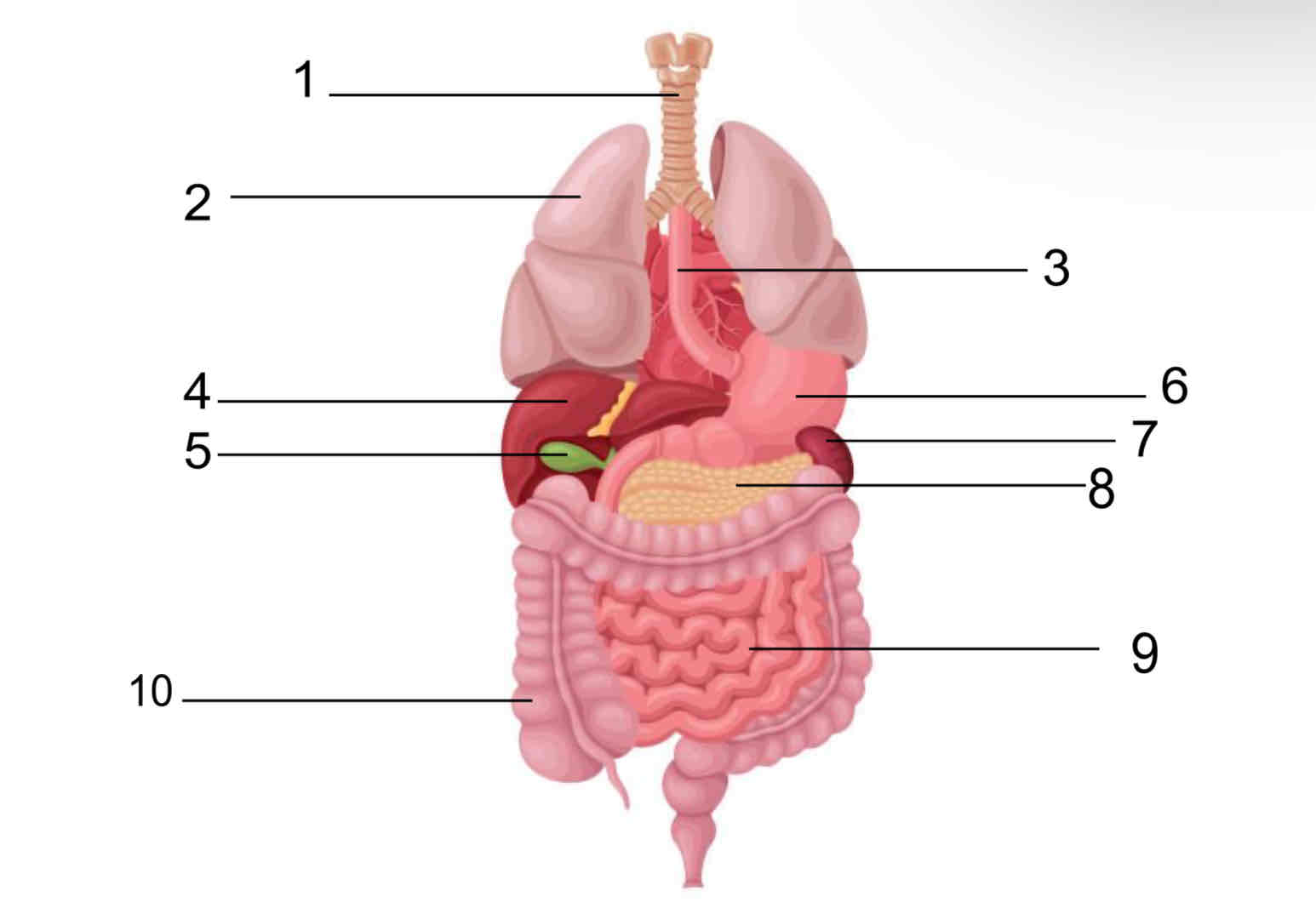
esophagus
3
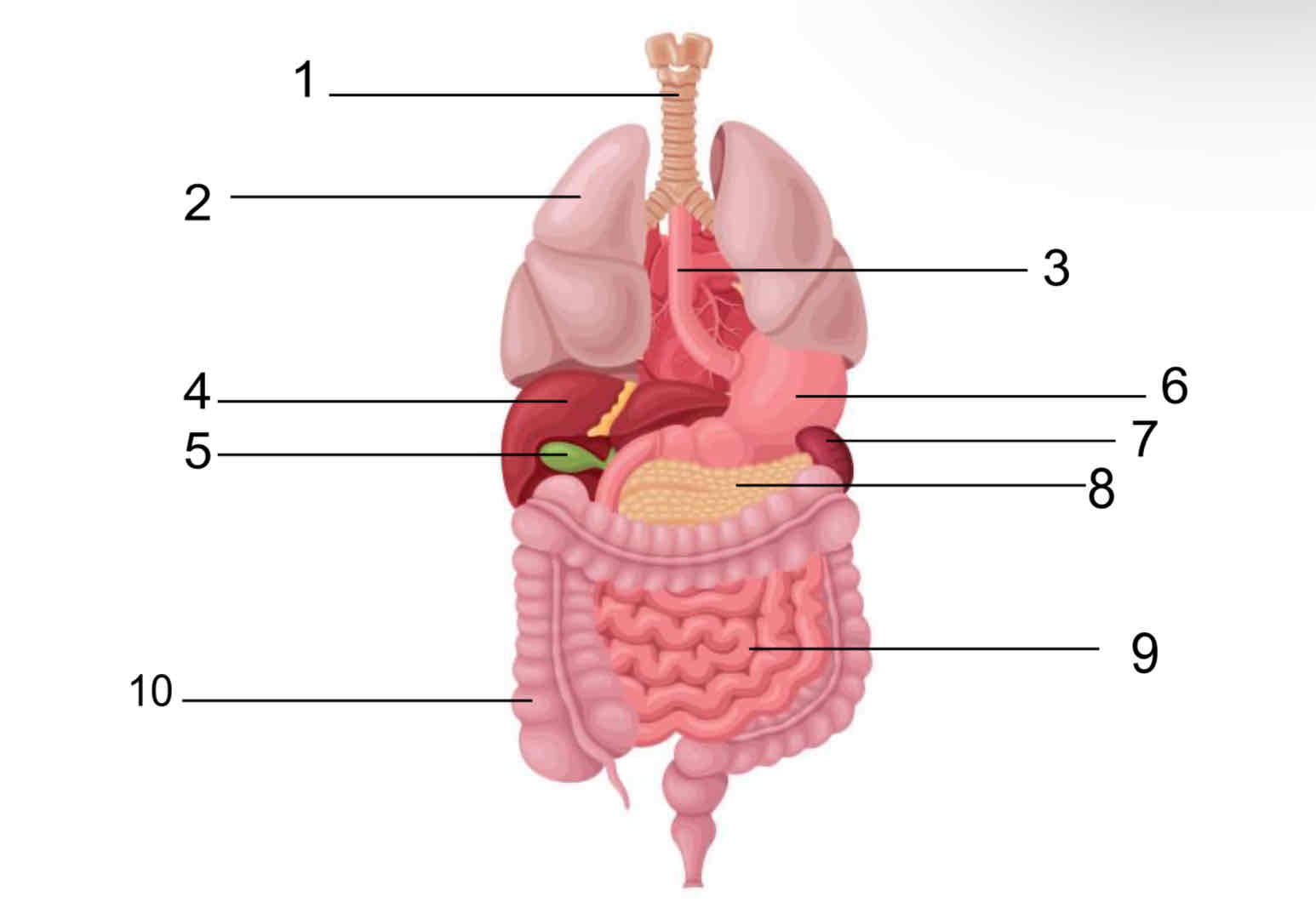
large intestine
10
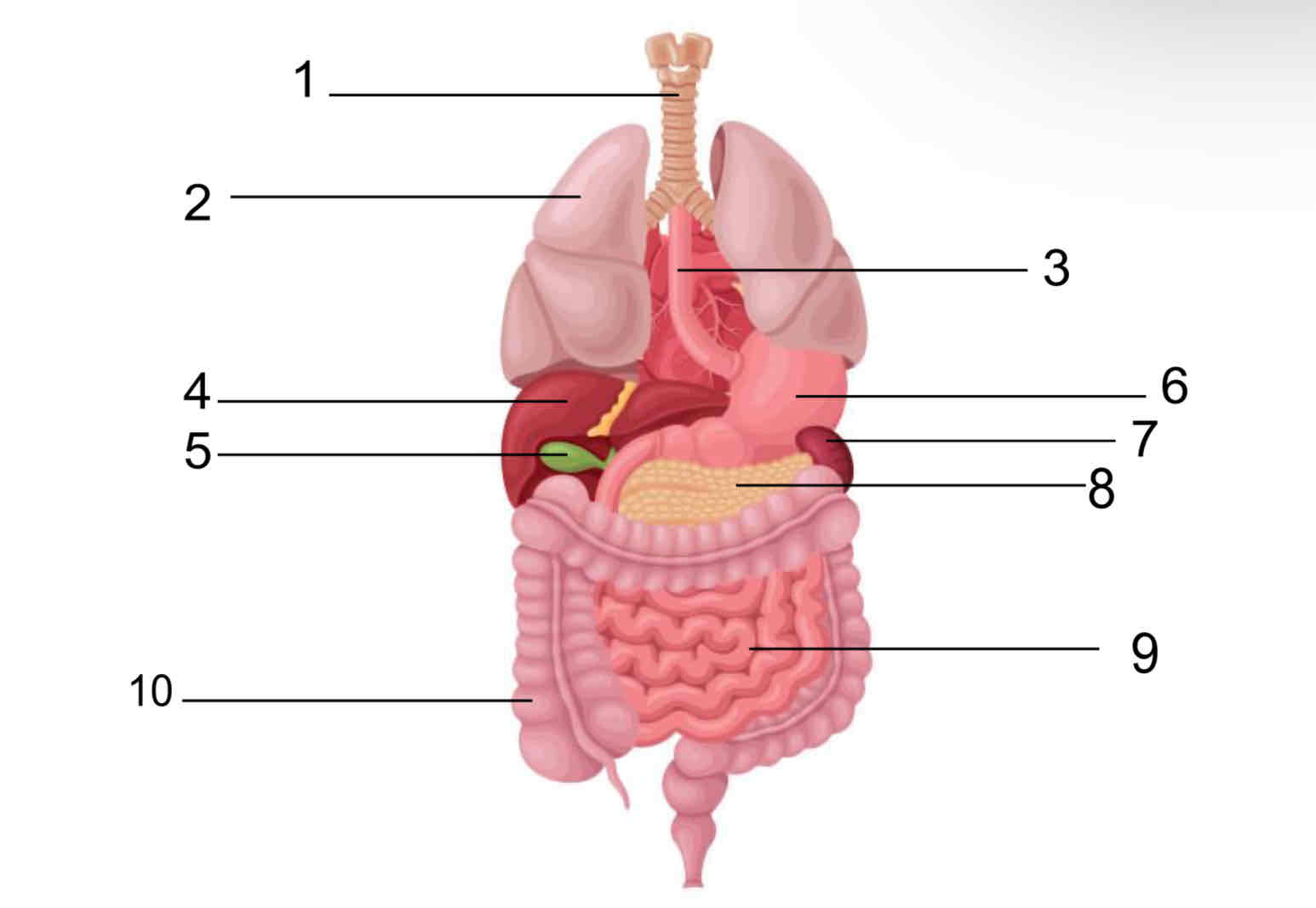
small intestine
9
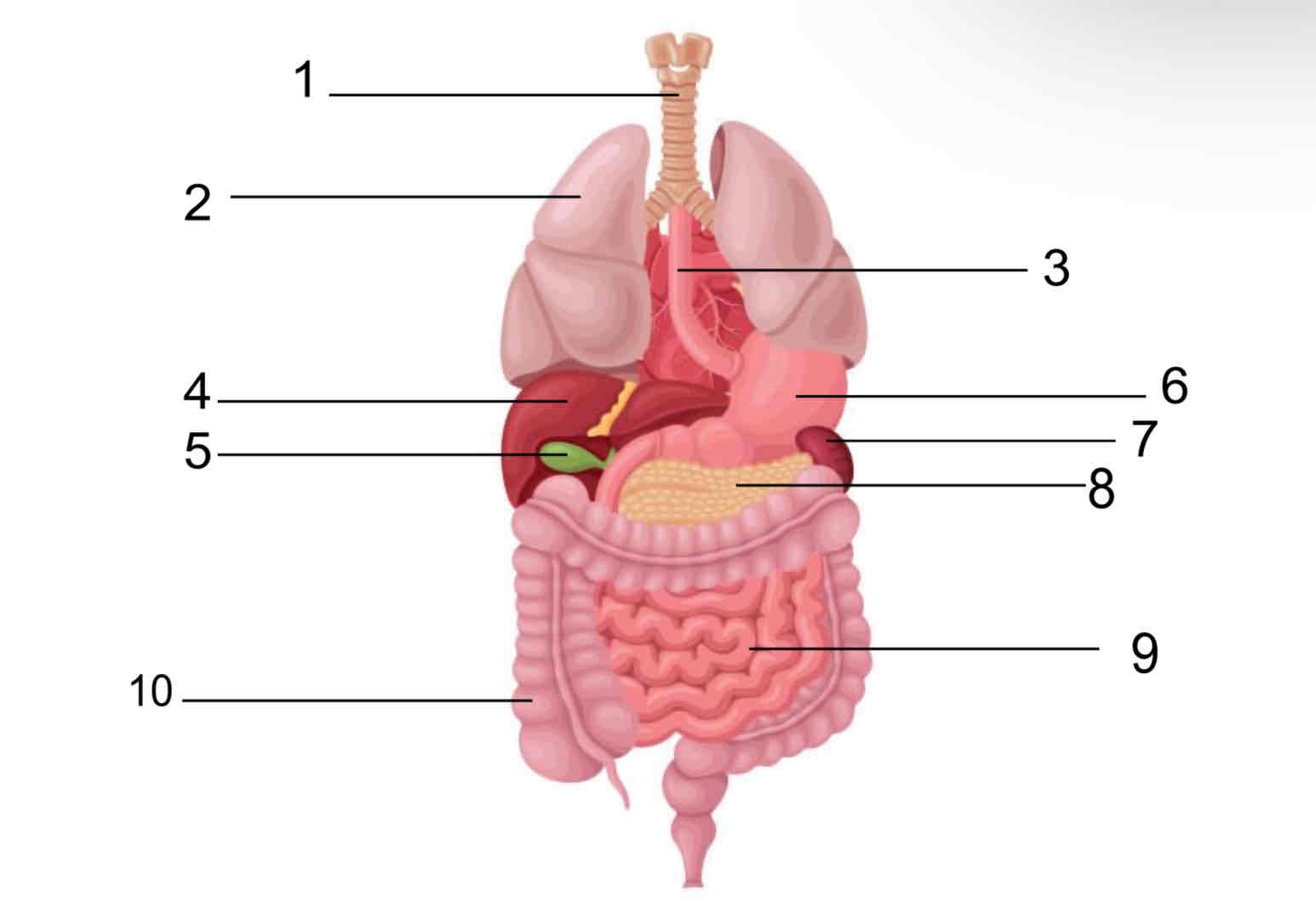
stomach
6
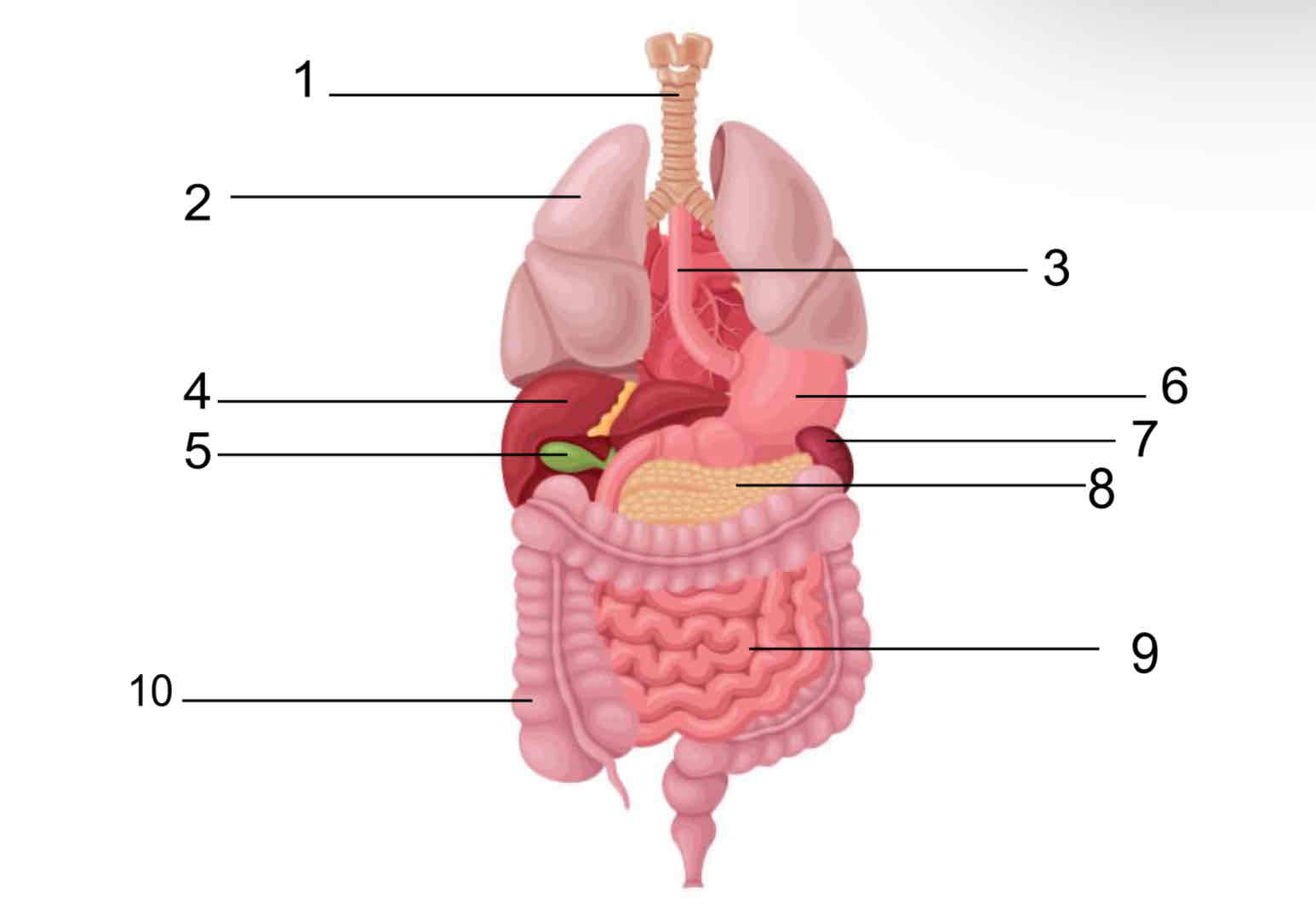
pancreas
8
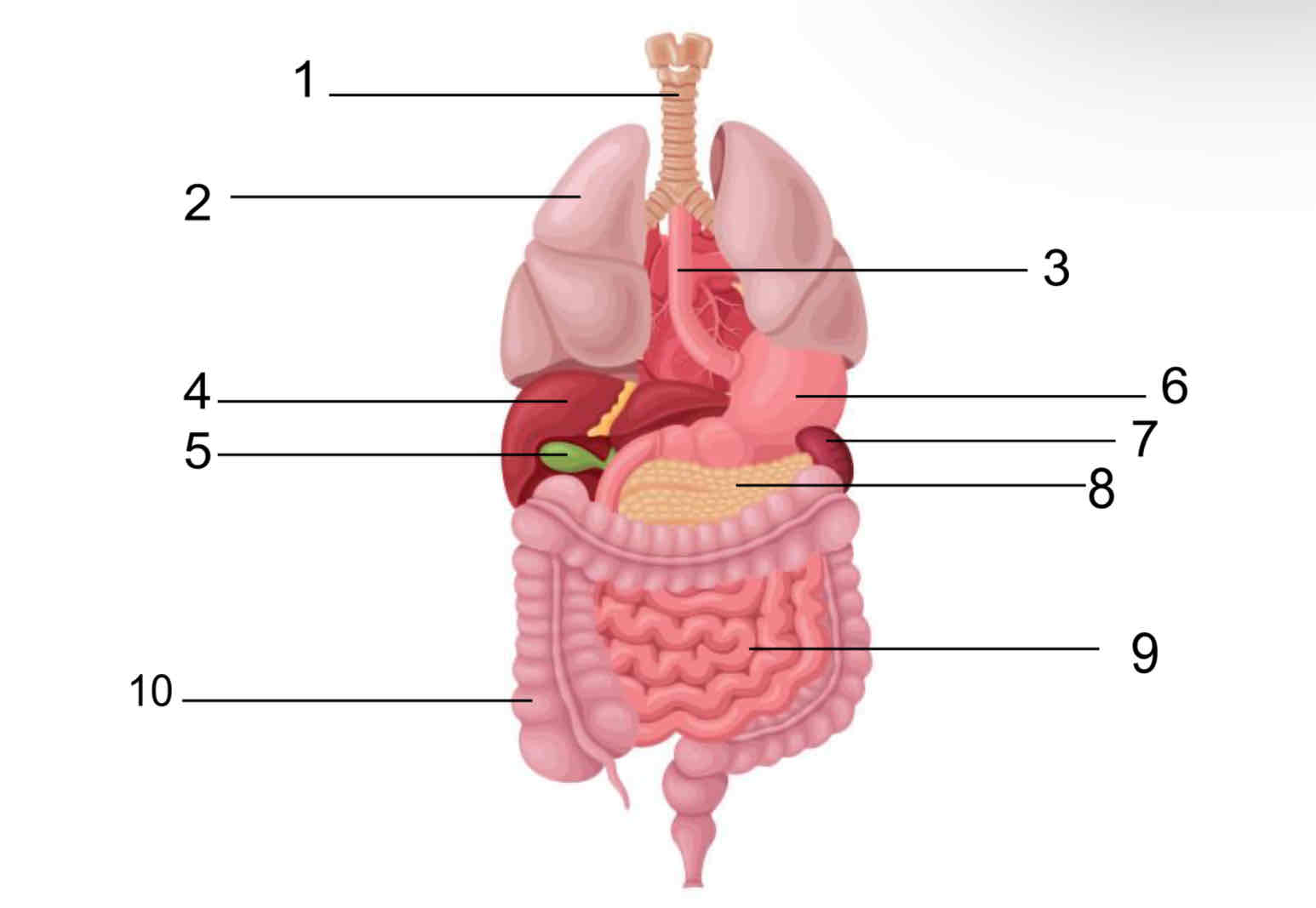
spleen
7
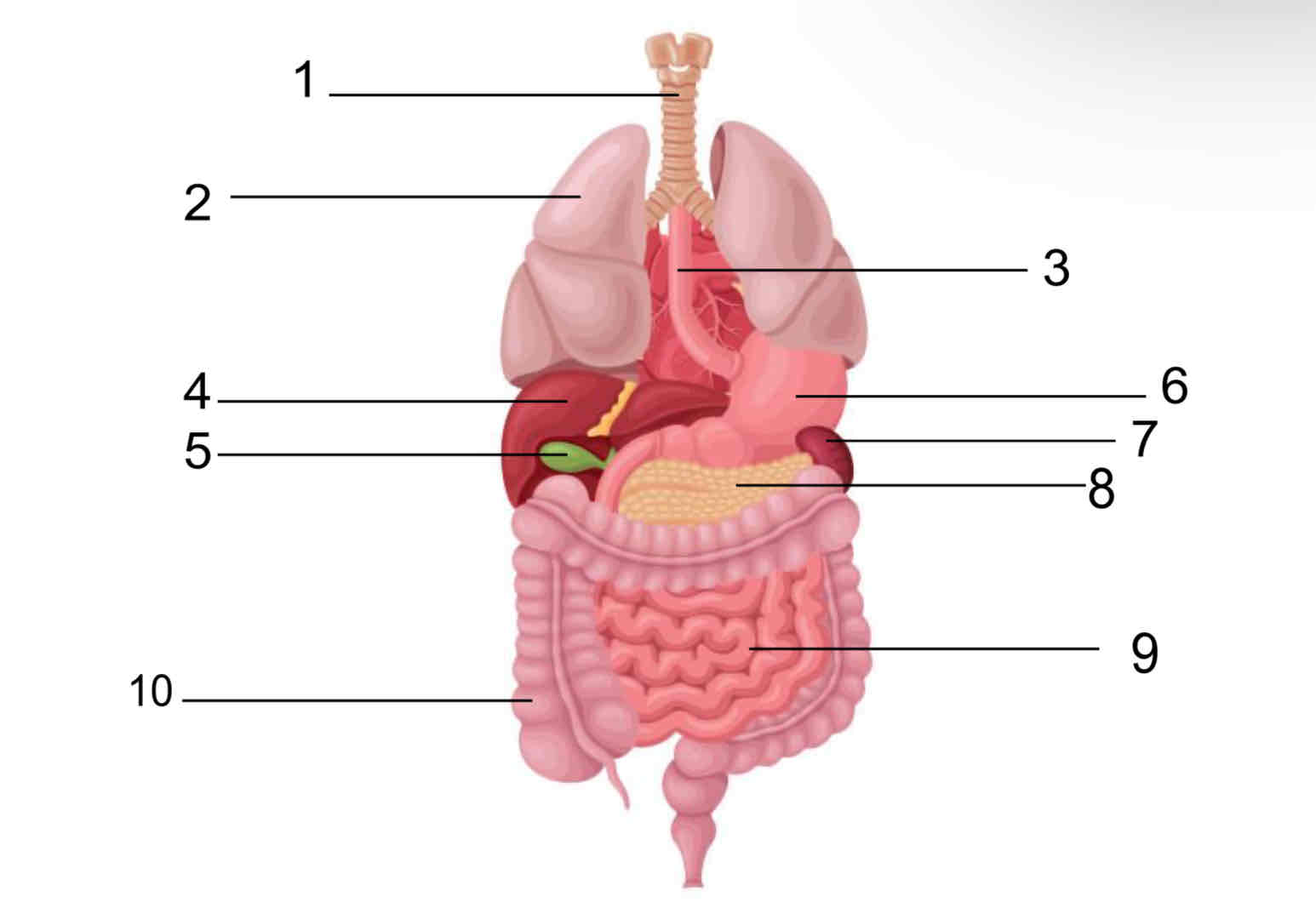
trachea
allows passage of air into lungs
lungs
exchanges oxygen and carbon dioxide between blood and air
liver
metabolizes food and detoxifies blood, produces bile
gallbladder
stores and concentrates bile, helps digest fats
esophagus
transports food from mouth to stomach
large intestine
absorbs water and electrolytes from food, stores and eliminates waste products
small intestine
breaks down food into nutrients that can be absorbed into the bloodstream
stomach
stores and breaks down food
pancreas
exocrine - produces enzymes to help break down food, endocrine - produces hormones to help regulate blood sugar levels
spleen
fights invading germs in the blood
kidney
A
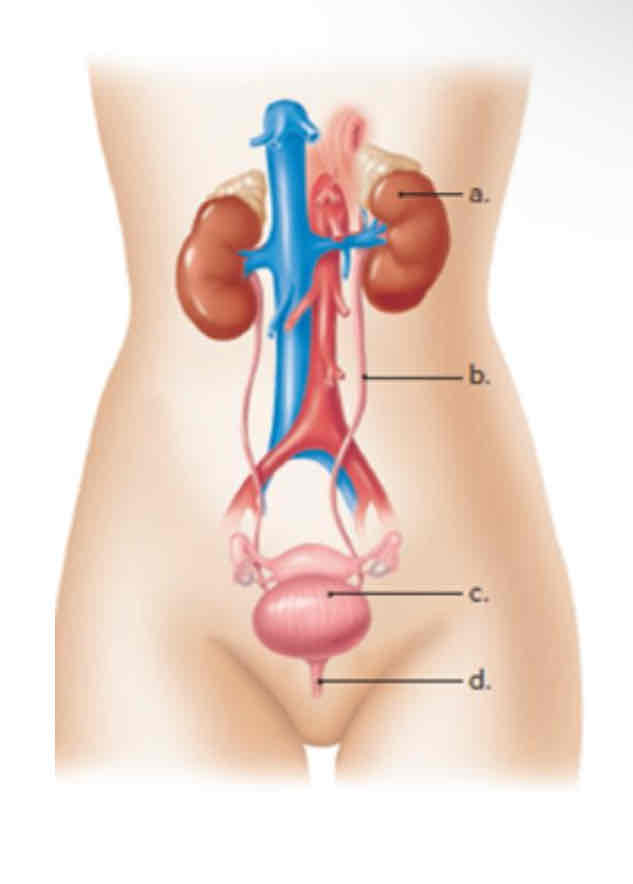
bladder
c
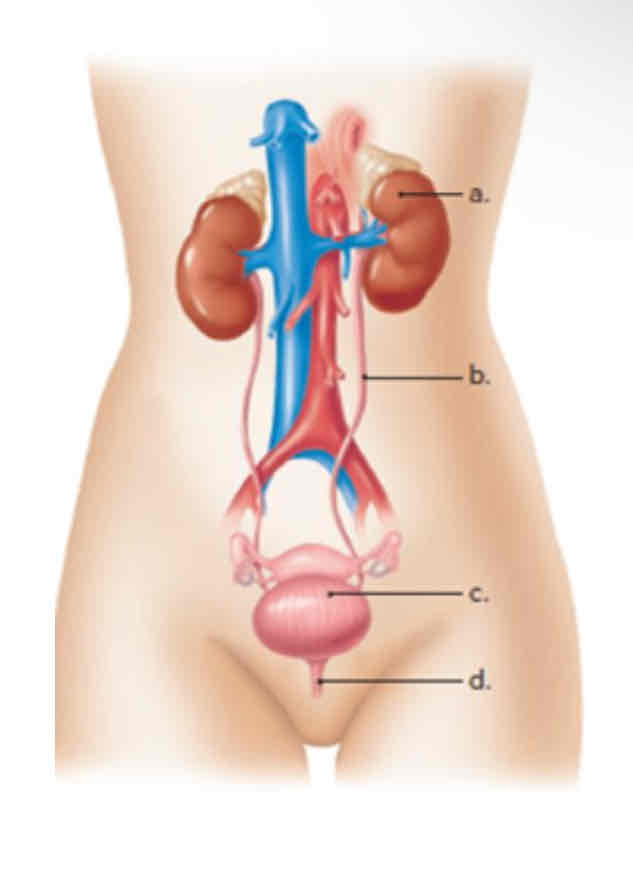
ureter
b
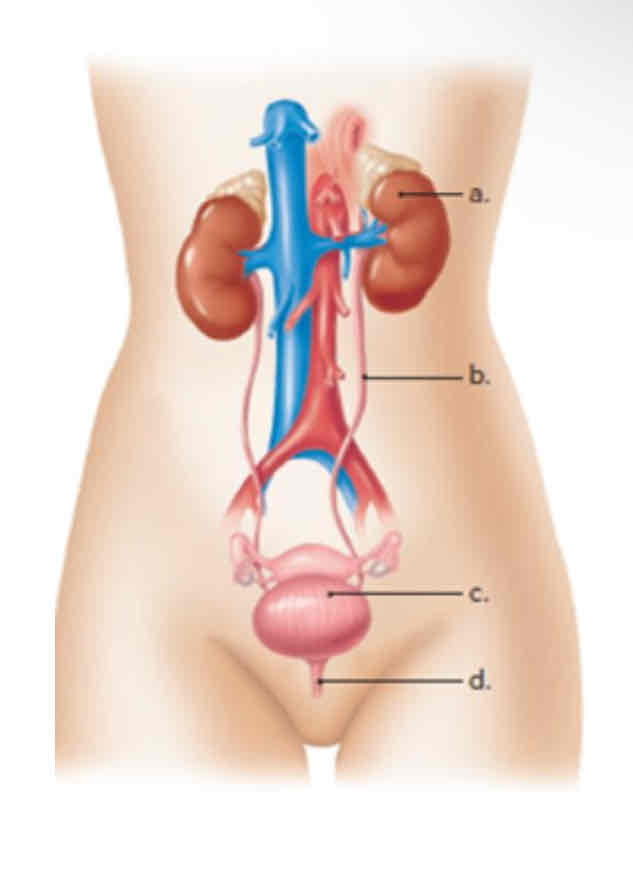
urethra
d
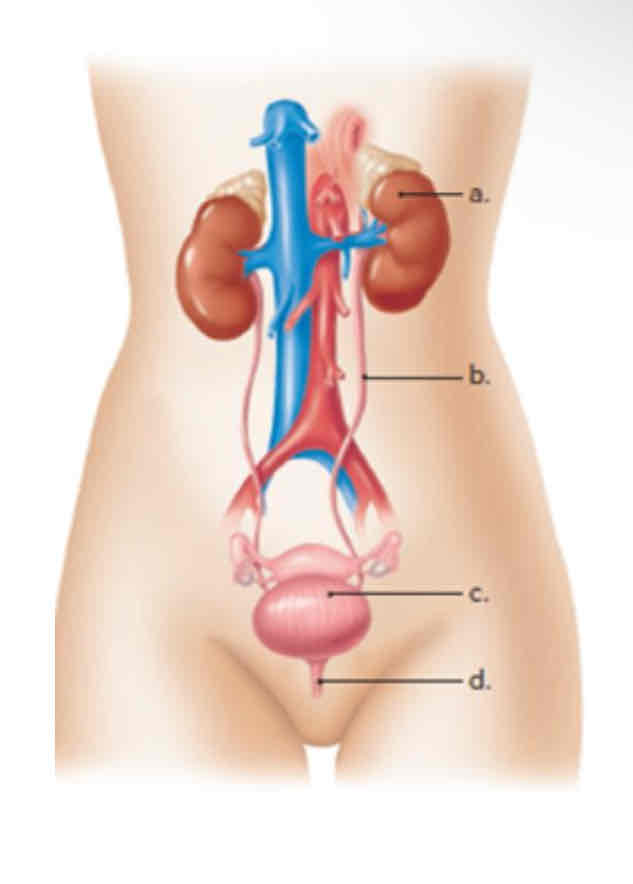
kindey
filters waste products, regulates fluid balance, regulates blood temperature
bladder
stores urine until released
ureter
carries urine from kidney to bladder
urethra
carriers urine from bladder to outside the body
connective tissue

epithelial tissue
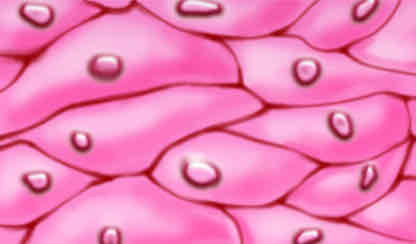
muscle tissue
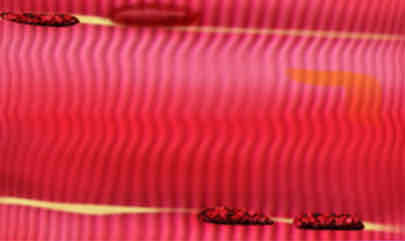
nervous tissue
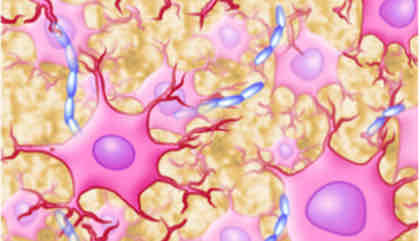
muscle tissue
tissue thats vital for movement
nervous tissue
tissue that conducts impulses to and from organs
connective tissue
tissue that provides support, absorbs shock, and stores/transports nutrients
cartilage, bones, body fat, blood
epithelial tissue
tissue that forms protective covering, allows nutrient absorption, filters harmful substances out of blood, and forms secretions
atom, molecule, organelle, cell, tissue, organ, body system, organism
put these in order - body system, atom, organelle, cell, organ, tissue, molecule, organism
skeletal system
body system that provides support and structure
bones, cartilage, joints
cardiovascular system
transports blood through body
heart, blood vessels, blood
integumentary system
protects body from environment, regulates body temperature
skin, hair, nails, sweat glands
respiratory system
taking oxygen and releasing carbon dioxide
lungs, airways, diaphragm
digestive system
system that breaks down food into nutrients for bloodstream
mouth, esophagus, stomach, intestines, liver, pancreas
muscular system
system that helps with movement
muscles
endocrine system
system that produces and releases hormones
glands
nervous system
controls bodily functions
brain, spinal cords nerves
immune/lymphatic system
defends body against infections
white blood cells, antibodies, immune cells
reproductive system
system that does reproduction
6:45 pm
1845 in greenwhich time
1530
3:30 pm in 24 hour clock time
1 ounce
30 millimeters in ounces
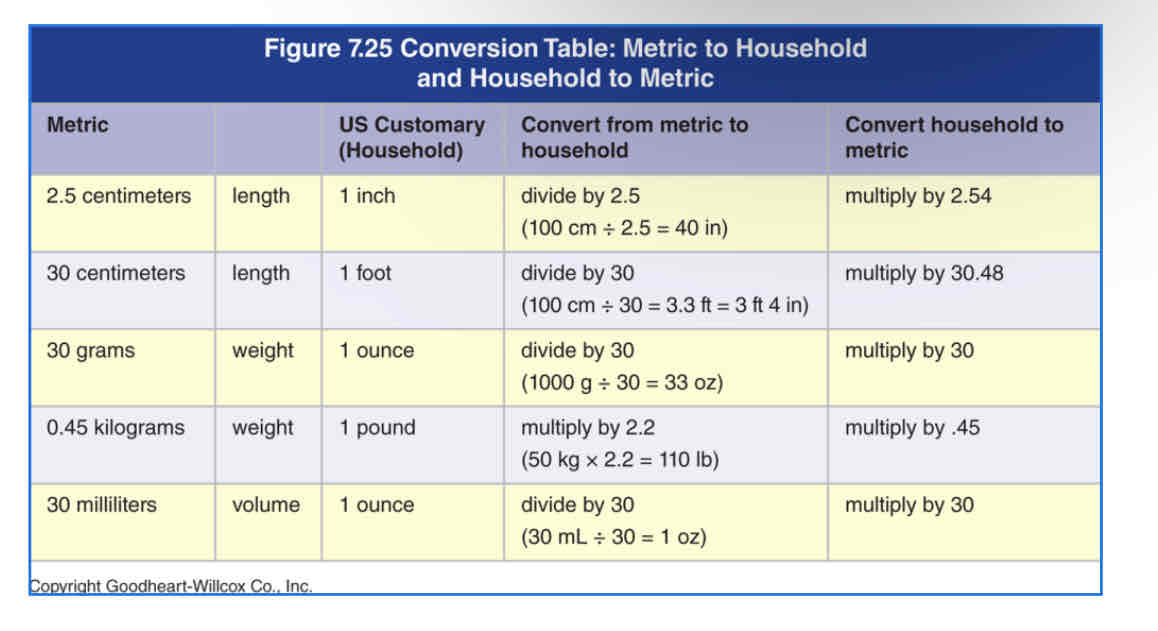
liquid medication
syrup, aqueous suspension, tincture
solid medication
capsule, tablet, lozenge
semisolid medication
ointment, suppository
oral
medication by mouth
rectal
medication in rectum
topical
medical to skin
sublingual
medication under tongue
injection
medication by needle
inhalation
medication breathed in
nurse practitioners work under their own license, physician assistants work under an MD that oversees their work
what’s the difference between a nurse practitioner and a physician assistant?
clinical training
hands on work with patients under the supervision of a licensed healthcare provider
collaborate
to work together and consult each together
cover letter
a message sent with a resume to introduce the job applicant and explain reasons for applying
delegate
to direct another healthcare worker to perform a care task that is within their training and scope
empathy
the ability to identify with another person’s feelings and thoughts
residents
individuals living in long term care facilities or medical school graduates completing final training
tact
ability to communicate difficult info without giving offense
standard precautions
steps taken by healthcare workers to prevent the spread of infection
therapeutic
a term for treatment given to maintain or restore health
interview etiquette
accepted appearance and behavior for the interview process
multidisciplinary healthcare team
a group of healthcare workers from different specialities providing specific services
personal protective equipment (PPE)
equipment worn to protect skin, clothing, and the respiratory tract from infection
postgraduate
education and training completed after receiving a bachelor’s degree
range of motion
the full extent of movement for a joint
24 hour clock
a method of telling time that assigns a number to each hour of the day
apps
software accessed through the internet running on various devices
assertive communication
a communication style characterized by confidence and consideration for others
communication barrier
anything that blocks or interferes with the exchange of info
patient interview
structured communication between a patient and healthcare worker for collecting subjective data
social media
online communication tools allowing info and resources to be shared via internet
US customary units
the main system for weights and measures in the US, based on yard, pound, and gallon
cultural diversity
differences in age, gender, abilities, sexual orientation, race, or ethnicity influencing beliefs and actions
goniometer
an instrument for meausring angles
medication
a substance proven effective for the prevention, diagnosis, or treatment of diseases
metric system
the decimal measurement system based on meter, liter, and gram as primary units
Healthcare Provider System
provides service of healthcare for the public
Healthcare Payment System
provides way to pay for healthcare
nonprofit organization
organized and operated for a collective, public, or social benefit, example: red cross
long term care facilities
care for elderly or disabled patients (people unable to live alone)